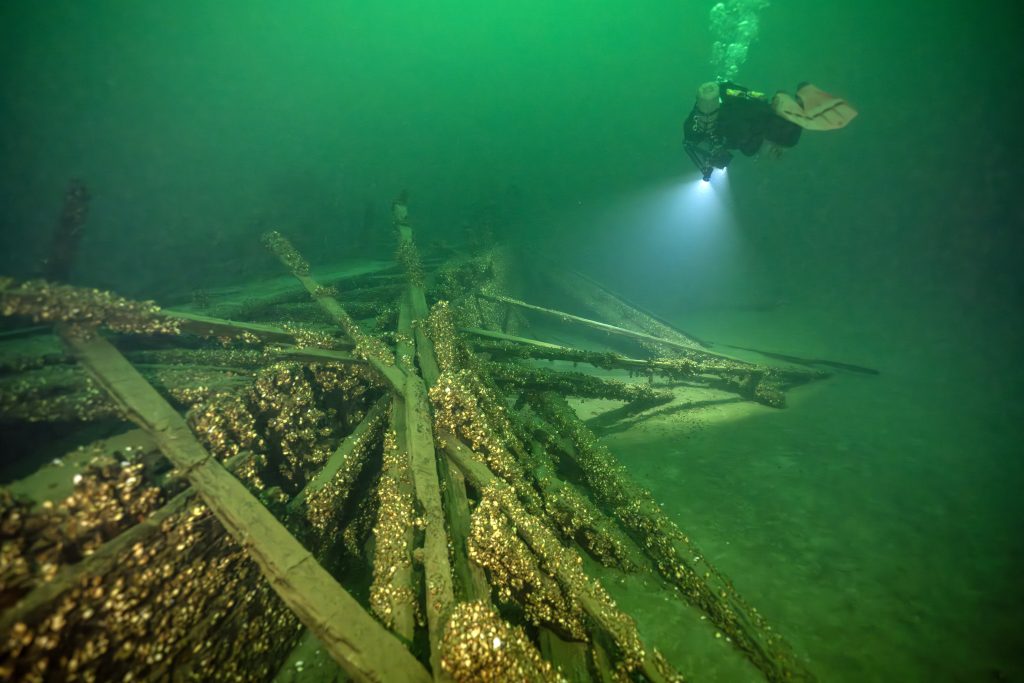
Missing Numbers
August 6, 2023
Cover Photo: Jill searching for Tonnage Markings

We are able to positively identify the wreck as the OLIVER MOWAT due to an overwhelming amount of evidence
- The wreck lies close to the coordinates listed in the official records
- It is a three masted schooner of the correct length and beam
- The impact point precisely matches the historical collision report
- The masts have clearly been dynamited down as recorded in newspaper articles
- Anchors are still in place and match photos found in archives
Even with all of this evidence, historians are always looking for absolute proof by finding either the name somewhere on the wreck or tonnage markings which are unique to each ship.
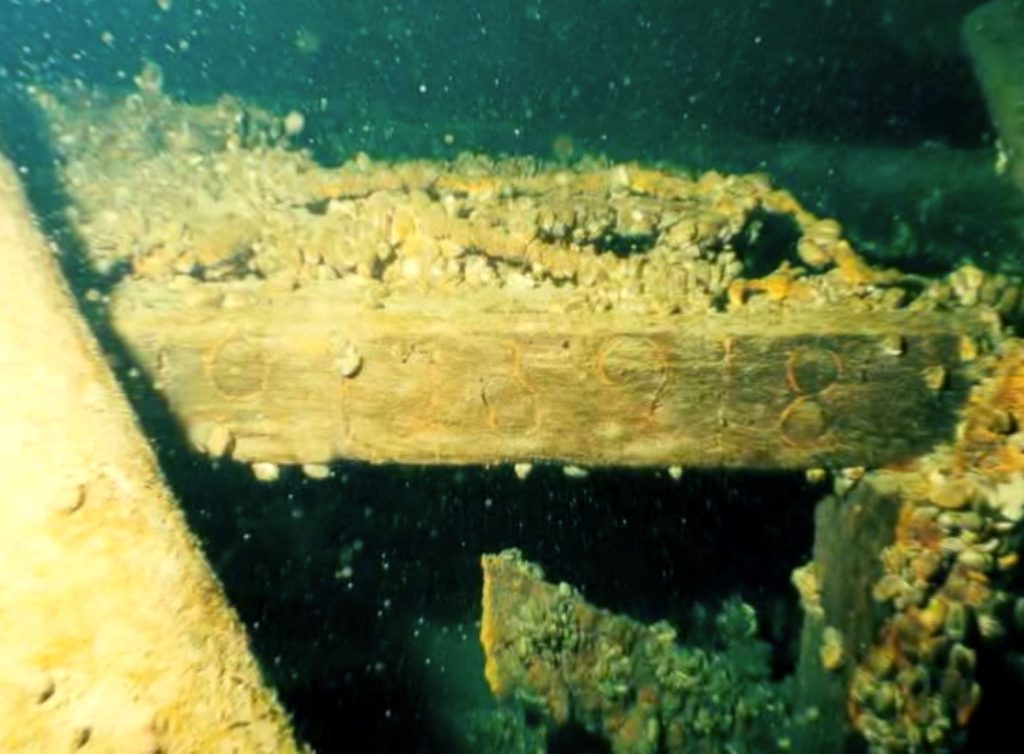
After a ship is launched, it undergoes an official inspection in order to register it. This involves listing its dimensions, features and calculating its cargo capacity. The official tonnage numbers are very important so are usually carved into one of the boards on the foremost cargo hold opening. They are used throughout the ship’s career for a variety of purposes from calculating the cost of passage through canals to the amount of income for the quantity of cargo carried.
Jill and I have an exact sequence of preparing and entering the water. This routine ensures that we have checked everything and are fully prepared for a safe dive. After gearing up, Jill enters the water first and then the captain passes her the camera. Then I proceed with my final gear up while Jill makes her way to the shotline. Then as I was about to enter the water, Jill suddenly returned calling out to quickly get her camera out of the water. As the captain grabbed it, I was anxious since I could hear the alarm going off. This was quickly replaced by relief as I heard Jill shout out, “don’t worry I am sure that it has not flooded, the alarm is singling a loss of vacuum”. Since Jill was already in the water and I was prepared to go, we decided to continue with the dive which would be a historic moment of Jill not carrying a camera.
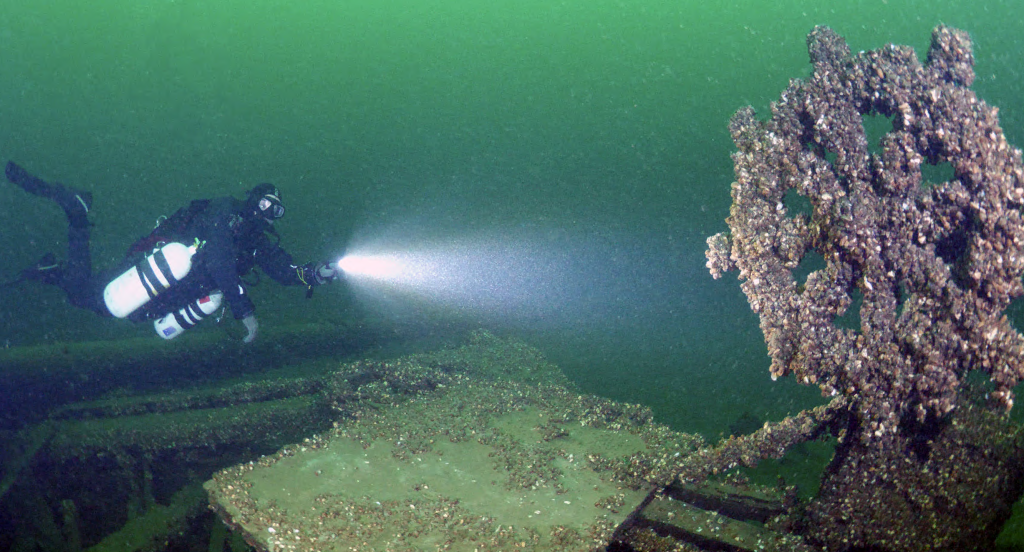
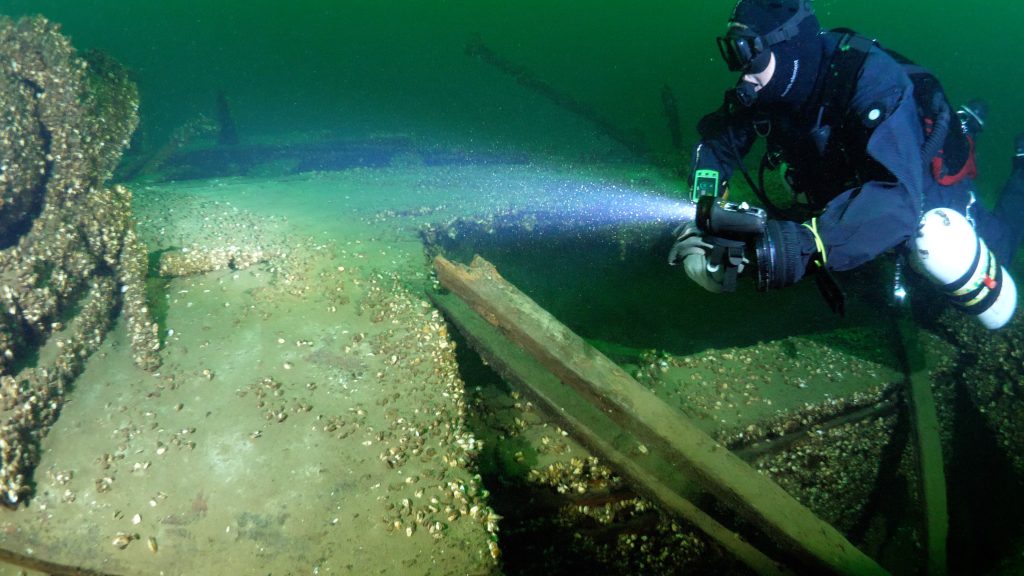
Upon reaching the bottom Jill headed directly toward the forward hold opening, while I captured some rare photos of her without a camera. Jill then carefully examined all of the timbers looking for the tonnage numbers, but with so many Quagga Mussels covering the surface she was unable to locate them. Many divers may be tempted to scrape them off but in doing so damage the wreck. Mussels attach themselves with a series of byssus threads which burrow into the wood. In addition, their waste products are acidic which further weakens the wood. By removing the mussels, you tear off a layer of wood off of the wreck. Divers should always practice low impact diving by never disturbing the layer of mussels on shipwrecks.
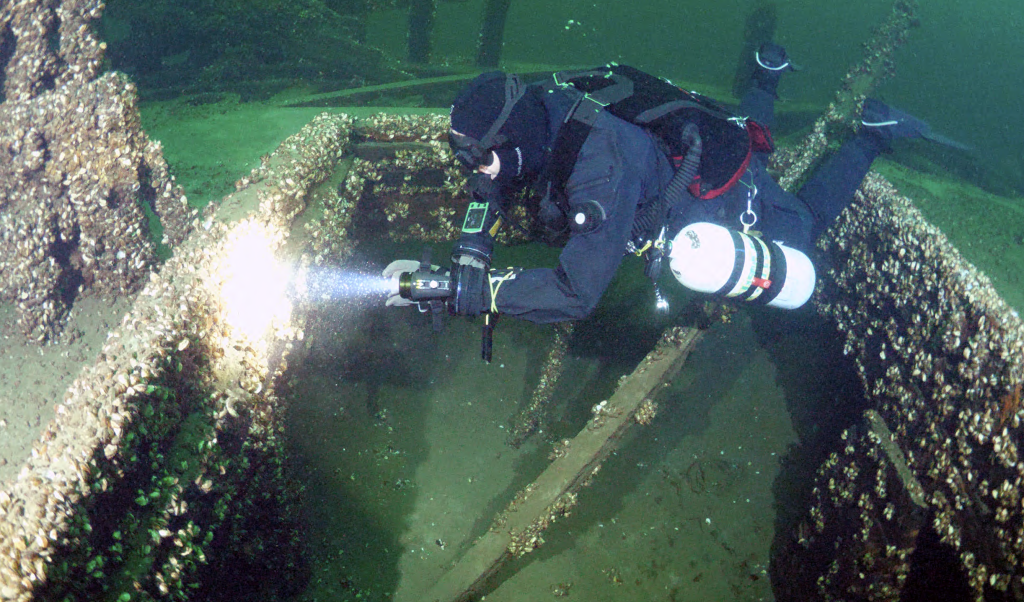
Unable to find the markings, we headed to the stern to look for the name which we found in a historical photo painted across the lower transom. When the wreck was first discovered, the stern was fully intact and the name was likely visible, but time and the weight of so many mussels has caused it to collapse. Searching the fallen timbers, our hope was to find some of the name still visible, but again this evidence alluded us since the boards were face down in the slit and our archaeology permit does not allow us to disturb the site in any way.

